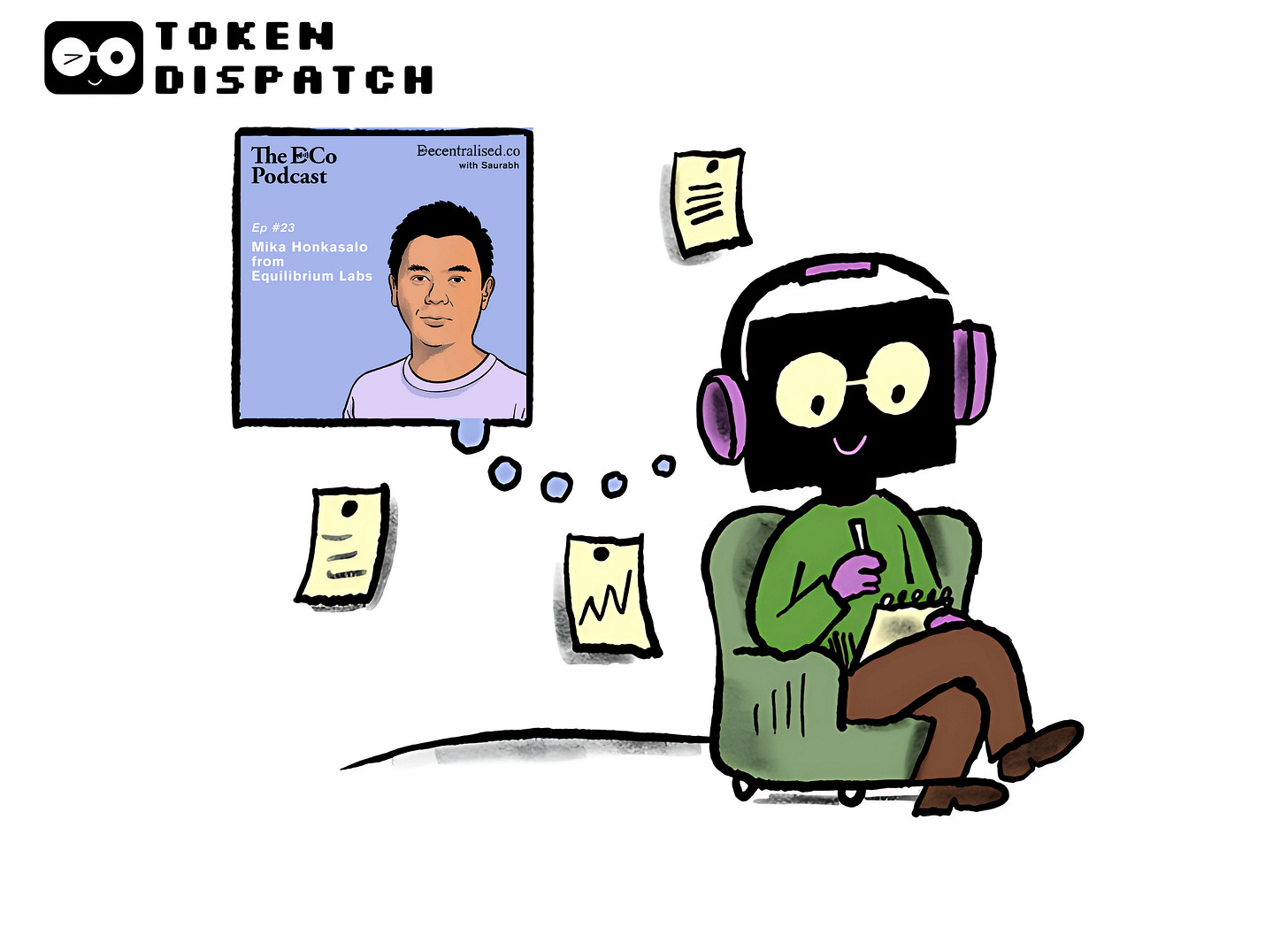Hello
Nearly everything I have read in the last two weeks has focused on the same two things: BTC’s price drops and the macro-economic environment driving BTC’s price drops — CPI prints, government stimulus, AI bubble, liquidity flows, treasury yields, ETF outflows, the US Supreme Court’s decision on US tariffs, and the entire spectacle.
And here I am… staring at Ethereum’s chart and its journey over the last couple of years. The swings in ETH’s price could convince a crypto outsider about how little exciting life could be for someone with an ETH-heavy portfolio.
Many on Crypto Twitter (CT) share similar thoughts about the Layer-1 blockchain that has earned one too many monikers: the world computer, the future of internet infrastructure, the financial layer of the internet, and so on.
In today’s piece, I reflect on how Ethereum’s marketing problem has led the market to misprice and misunderstand its potential.
For this, I draw on the conversation between Mika Honkasalo, Investment Partner at Equilibrium Labs, and Saurabh Deshpande, who hosted the episode for our partners at Decentralised.co. The episode was published over a year ago, but I will reflect on what stays relevant today.
Consider watching the whole episode where Mika shares his journey from being a basketball analyst to signing cheques for crypto projects at Equilibrium Labs 👇🏾
Now, onto the part that stayed with me.
Unlock Web3 Insights with Decentralised.co
Long-form stories trusted by the best in Web3. Senior executives from 140+ enterprises trust them to keep them updated on what’s going on in crypto.
Good writing. In-depth conversations. Right in your inbox.
Subscribe to Decentralised.co
The conversation around ETH this cycle has been emotional. Each time BTC edged higher, above its previous all-time high, CT lashed out at ETH’s underperformance with memes, analyses, and whatnot, as if the second-largest network is obligated to mirror the first.
Nothing in Ethereum’s design promises a monetary premium. But I understand why the markets have misplaced expectations for Ethereum.
BTC has one job and one expectation: to be digital gold, a store of value that will appreciate in dollar terms over time due to its embedded limited supply. Ethereum’s value is pulled in multiple directions, balancing its core principles. Think transparency, security, immutability, and programmability via smart contracts. Amid all this, the Ethereum Foundation’s efforts (or the lack of) toward communicating its genuine aspirations have led people to misunderstand Ethereum as money, similar to how they perceive Bitcoin.
There are two perspectives one could have here. Some call it an identity crisis arising from a marketing misstep.
Mika compared this with Solana’s branding.
For all the jokes and memes about Solana, the chain spent two years marketing a single message: that it is building a “decentralised NASDAQ that runs near the speed of light.” You may disagree with it, but it stuck to a consistent message. It doesn’t pretend to be 10 things or a money equivalent.
Meanwhile, Ethereum’s communication has been inconsistent, swinging from the internet rails of Web3 to ultrasound money to digital oil. All of them are true, but none stands out as the dominant purpose or the single biggest aspiration of the blockchain. While the principles are honest, they could cost commercially. That makes the market box ETH into a simple story of money, while the chain has evolved into an infrastructure powering the DeFi protocols on Web3.
I like how Mika sees crypto projects as cash-flow-generating businesses rather than just money. But there is an irony here.
Today, Ethereum is more of a settlement layer that enables the bulk of transactions, fees, and user journeys on cheaper and faster Layer-2s. So, when the market attaches ETH’s value to its fee-burning activity, the efficiency improvement paradoxically becomes an uninspiring data point.
There’s another perspective. Some would find it needless for Ethereum or its community members to market its intent or purpose.
The distinction that Ethereum enjoys stands out in some domains.
Look at how digital asset treasuries (DATs) behave. ETH-heavy DATs outperform BTC-heavy DATs because staked ETH earns yield, unlike BTC.
This one feature changes how these companies survive market cycles.
Bitcoin treasuries have acted like roller coasters, moving with market cycles. Their balance sheets look like gold mines when the underlying asset is on an upside, but the cracks beneath the surface appear the moment liquidity dries (like it has now).
Read: Where’s DAT Beta? 🎁
In worst cases, when DATs rely solely on their BTC treasuries with little to no other operational income, they often pay their monthly bills by issuing new equity, as I explain here. They have no yield component, no internal engine, and no way to make the asset work harder than the chart.
Ethereum DATs do more than just sit on their ETH. They can stake, restake, and earn native yield. A treasury denominated in ETH can participate in the economy it is exposed to. Staked ETH insulates investors against market cycles.
This part of the story seldom makes it into Ethereum’s marketing, partly because the community refuses to market itself.
But if you strip all of this away, ETH’s behaviour as treasury capital tells you what kind of asset it really is. Its asset value compounds through usage, activity and composability.
Mika tied Ethereum’s fate to its ability to build something that a billion users will want to use. He also mentioned how Base is the most successful L2 because of Coinbase’s distribution. I attribute Ethereum’s future trajectory to the same factor.
Ethereum’s aversion to marketing itself will not matter in the long run if it enables DeFi projects to be built on top of it, which can then deliver mainstream distribution. As long as these projects, consumer apps and L2s keep choosing Ethereum as their settlement base, the chain wins through sustained demand for blockspace, which will generate fees.
It can then trace AWS, from being a slow, thin-margin experiment inside Amazon to becoming the most important business in the company.
That’s it for this week’s reflections. I’ll see you with the next one,
Prathik
Token Dispatch is a daily crypto newsletter handpicked and crafted with love by human bots. If you want to reach out to 200,000+ subscriber community of the Token Dispatch, you can explore the partnership opportunities with us 🙌
📩 Fill out this form to submit your details and book a meeting with us directly.
Disclaimer: This newsletter contains analysis and opinions of the author. Content is for informational purposes only, not financial advice. Trading crypto involves substantial risk - your capital is at risk. Do your own research.






